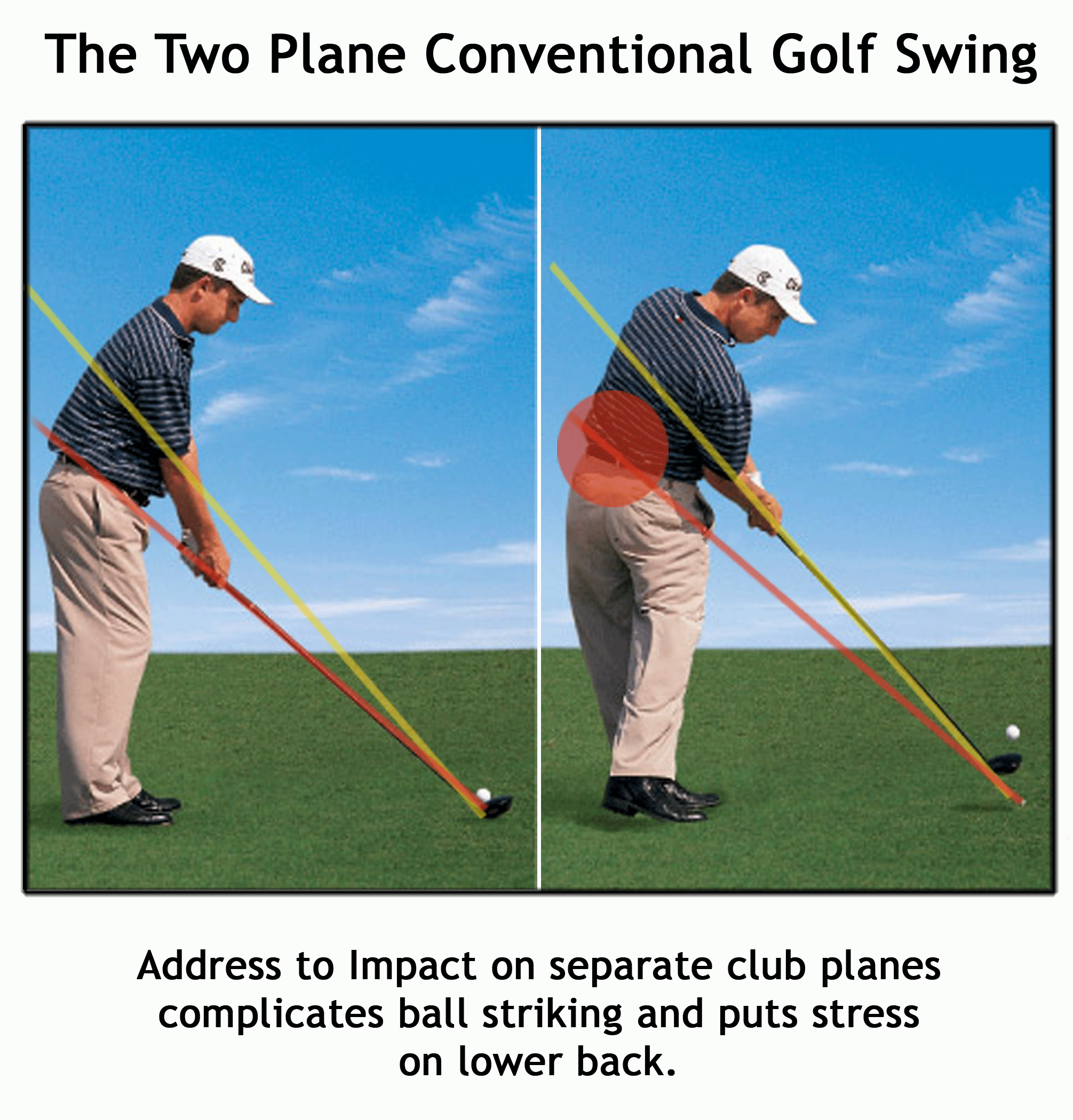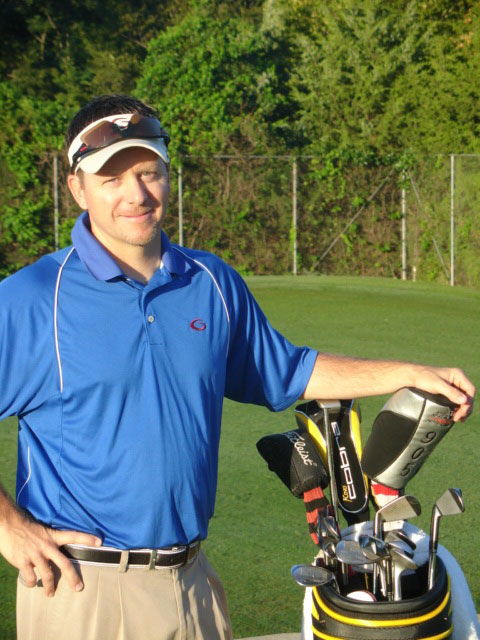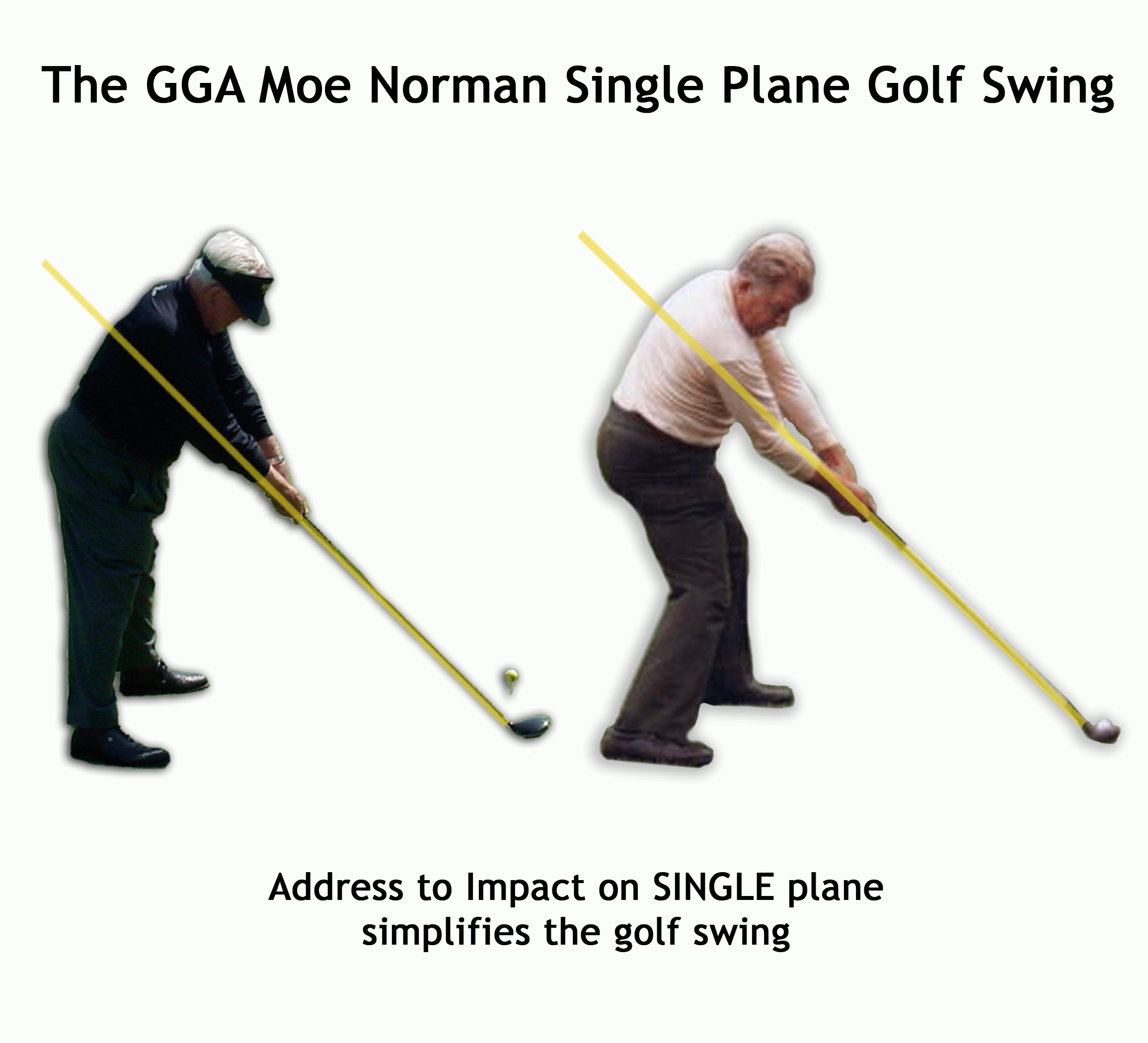You’ve probably been taught by Conventional golf methods to lower your hand’s position at address where the shaft points through the pelvis area. Because of this address position your standing too close to the golf ball. So when you swing, the club moves into a plane that aligns with the middle of the back, higher than the original address position you started at.
The movement from the lower pelvis plane to the upper spine shaft plane causes a twisting of the lower spine. This causes a painful stress in the lower back.
If you draw a line on the spine, you can see that in order for the body to compensate for a low hands/close to the ball position at address, the spine must move painfully upward and backward and even curve during impact.
The Solution: Moe Norman’s Single Plane Golf Swing
Moe Norman intuitively found a solution to this back problem by establishing the spine and shaft plane at address; we call these alignments the spine shaft intersect. The correct spine-shaft intersect creates the perfect amount of distance from the golf ball thus eliminating stress during the golf swing.
By drawing a line on the shaft, you can see that from address to impact, Moe Norman addressed and impacted on the same plane. This address/impact same plane position reduces stress on the back.
As you can see by drawing a line on the spine it remains in the exact same position from start to impact showing stress movement of the spine thus eliminating stress and compression on the lower back.
Moe Norman intuitively found the solution to your back pain.
Listen up. You can start launching laser straight, heart-stopping drives without any pain! What’s more…
• It doesn’t matter if you’re too short, too tall or too out of shape…
• It doesn’t matter if you’ve got arthritis, a bad back or a bum knee…
• It doesn’t matter if you’re a beginner, or have been struggling at golf for decades…
• And… it doesn’t matter if you don’t think enjoying golf can be this easy…
The ONLY thing that matters… is your desire to start hitting the longest and most accurate tee shots of your life.
You bring the desire. We’ll provide the simple, pain-free swing and your golfing life will change forever.
So, I know what you’re thinking, “What is the First Step?”
Enter your name and email address (Here) and we will send you a short instructional course on what steps you need to do RIGHT NOW, to start playing better, hitting straighter and enjoying golf without pain.

 I often tell my students that no one has spent more time and money on golf instruction than me. This all started in 1991 when my golf game was desperate and I needed help. I had just returned from the Asian Professional Golf Tour competing against the likes of V.J Singh, David Toms and Todd Hamilton to name a few. After playing with some of the best in the world, I learned that I lacked consistency and I needed better ball striking abilities if I was to continue playing. After discussing my situation with some of my tour friends, I decided to search for an instructor who could help me understand the swing and help me become a better player.
I often tell my students that no one has spent more time and money on golf instruction than me. This all started in 1991 when my golf game was desperate and I needed help. I had just returned from the Asian Professional Golf Tour competing against the likes of V.J Singh, David Toms and Todd Hamilton to name a few. After playing with some of the best in the world, I learned that I lacked consistency and I needed better ball striking abilities if I was to continue playing. After discussing my situation with some of my tour friends, I decided to search for an instructor who could help me understand the swing and help me become a better player.

